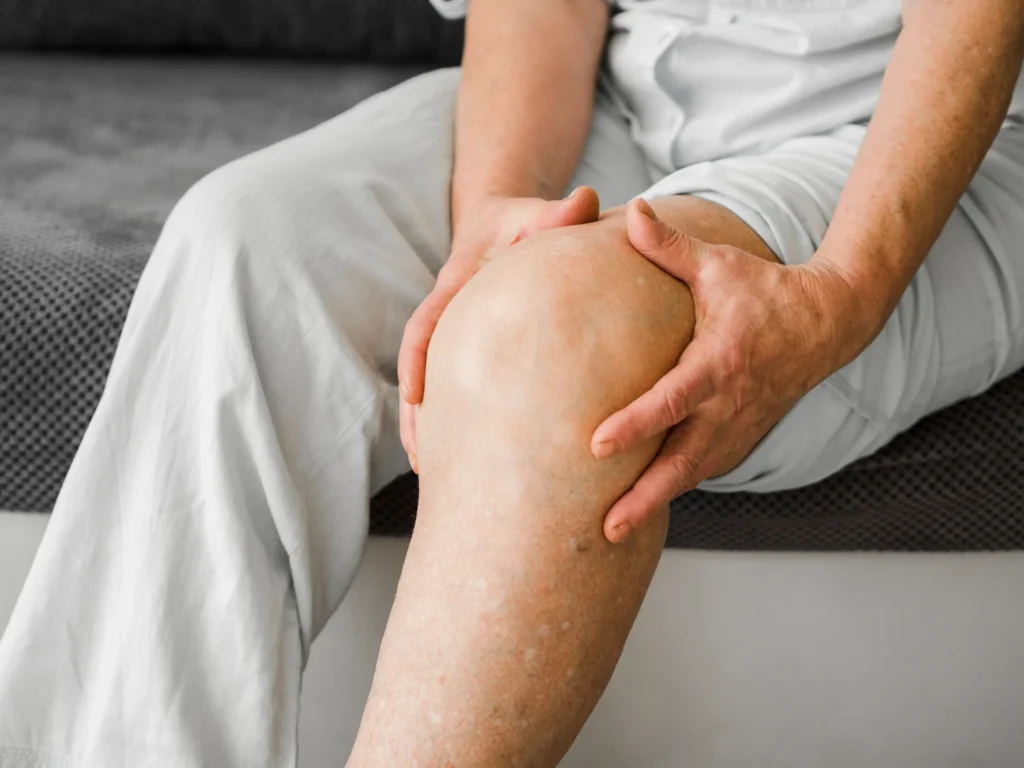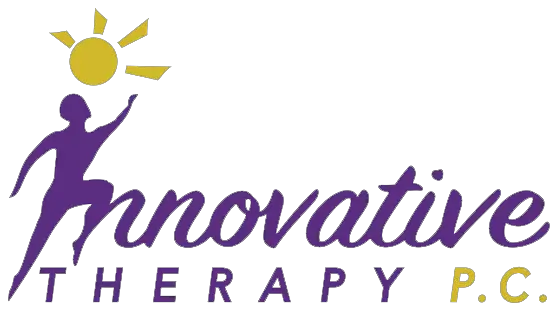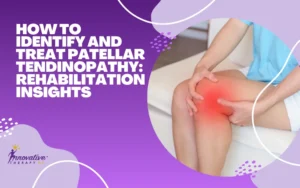Chronic knee pain is a condition that affects millions of people, often causing discomfort, limited mobility, and frustration. Whether it’s due to arthritis, an old injury, or general wear and tear, knee pain can seriously impact daily life. If you’ve been struggling with knee pain for months or even years, you know how challenging it can be to find relief that lasts.
Fortunately, there are several effective treatments available for managing chronic knee pain, ranging from conservative approaches like physical therapy and medication to more advanced options like injections or surgery. Understanding your treatment options can help you find the right solution for your specific condition.
If you want to learn more about how to effectively manage chronic knee pain, keep reading. I’ll walk you through the various treatments that can bring you the relief you deserve and help you get back to enjoying life without constant discomfort.
Understanding Chronic Knee Pain

Chronic knee pain is defined as knee pain that persists for more than three months, often without relief from traditional treatments. This pain can result from various conditions such as arthritis, ligament injuries, or tendon issues. Chronic knee pain can significantly affect your quality of life, making everyday activities like walking, climbing stairs, and even sitting uncomfortable.
Common Causes of Chronic Knee Pain
- Osteoarthritis (OA): The most common cause of knee pain, OA is a degenerative condition that wears down cartilage, leading to inflammation, stiffness, and pain.
- Ligament Injuries: Injuries to the ligaments such as the anterior cruciate ligament (ACL) can cause ongoing knee instability and pain.
- Tendonitis: Inflammation of the tendons in the knee, often caused by repetitive use or injury.
- Bursitis: Inflammation of the fluid-filled sacs (bursae) around the knee joint, leading to swelling and discomfort.
- Patellofemoral Pain Syndrome: Pain around the kneecap due to imbalances in muscle strength or alignment.
Understanding the specific cause of your knee pain is essential in determining the most effective treatment options.
Treatment Comparison
| Treatment Option | Indications | Benefits | Risks/Considerations |
|---|---|---|---|
| Physical Therapy | All types of chronic knee pain | Improves mobility, strengthens muscles | Requires time and commitment, not immediate relief |
| Medications (NSAIDs) | Pain management, inflammation reduction | Quick pain relief, easy access | Long-term use can cause side effects (e.g., ulcers) |
| Corticosteroid Injections | Inflammation, arthritis pain | Immediate pain relief | Short-term solution, potential side effects with frequent use |
| Knee Replacement Surgery | Severe arthritis or joint degeneration | Long-term relief, improved mobility | Long recovery time, risks of surgery |
Diagnosing Chronic Knee Pain
Before you begin any treatment plan, it’s crucial to identify the cause of your chronic knee pain. A proper diagnosis can help tailor the treatment plan to your specific needs and ensure that you are addressing the root cause of the problem. Here’s a brief guide on the diagnostic process:
When to Seek Medical Attention
If your knee pain lasts for more than a few weeks, worsens over time, or is accompanied by swelling, redness, or fever, it’s important to consult a healthcare professional.
Diagnostic Tests and Imaging
- Physical Examination: A doctor will assess your range of motion, tenderness, swelling, and any structural abnormalities.
- X-Rays: To look for signs of osteoarthritis or fractures.
- MRI (Magnetic Resonance Imaging): Provides detailed images of soft tissues like cartilage, ligaments, and tendons, helping identify injuries or degenerative changes.
- Arthroscopy: A minimally invasive procedure where a camera is inserted into the knee joint to examine the damage directly.
Once the cause of the knee pain is identified, you can move on to exploring effective treatment options.
Also Read: Knee Pain After Hip Replacement: Strategies for Relief
Conservative Treatments for Chronic Knee Pain

In many cases, conservative treatments can help manage chronic knee pain, allowing patients to avoid surgery and reduce reliance on medications. These treatments focus on relieving pain, improving mobility, and preventing further damage to the knee joint.
Physical Therapy
Physical therapy is one of the most effective treatments for chronic knee pain. A trained physical therapist can create a personalized exercise plan designed to:
- Strengthen the muscles around the knee
- Improve range of motion and flexibility
- Correct imbalances and prevent future injuries
Therapeutic exercises can help reduce pressure on the knee joint, relieve pain, and improve overall mobility.
Medications
Several medications can help manage knee pain, especially in cases of arthritis or inflammation. These include:
- NSAIDs (Nonsteroidal Anti-Inflammatory Drugs): Such as ibuprofen or naproxen to reduce pain and inflammation.
- Acetaminophen: A pain reliever that doesn’t reduce inflammation but can help manage mild to moderate pain.
- Topical Pain Relievers: Creams or gels containing menthol or capsaicin can be applied directly to the knee for relief.
Braces and Supports
Knee braces or sleeves are designed to provide stability and relieve pressure on the joint. They are often used in cases of ligament instability or after surgery to prevent further injury.
Ice and Heat Therapy
Both ice and heat can be effective in managing knee pain. Ice reduces inflammation and numbs pain, while heat promotes blood flow and helps relax muscles. Applying ice for 15-20 minutes a few times a day can reduce swelling, while heat therapy can help with stiffness.
Advanced Treatments for Chronic Knee Pain
If conservative treatments don’t provide enough relief, advanced options such as injections or other medical interventions may be necessary.
Corticosteroid Injections
Corticosteroid injections can provide significant relief for chronic knee pain caused by inflammation. These injections help reduce swelling and pain in the joint, allowing patients to experience improved mobility. However, these injections are typically used sparingly due to the potential side effects of repeated use.
Hyaluronic Acid Injections
Hyaluronic acid is a substance naturally found in the synovial fluid of the knee joint. It acts as a lubricant, helping the knee move smoothly. Hyaluronic acid injections can help reduce pain and improve joint function, especially for patients with osteoarthritis.
Platelet-Rich Plasma (PRP) Therapy
PRP therapy involves taking a sample of your blood, processing it to concentrate the platelets, and injecting it back into the knee. This therapy promotes healing by stimulating the body’s natural healing processes. PRP is typically used for tendon injuries or joint degeneration.
Surgical Treatments for Chronic Knee Pain

For severe cases of chronic knee pain where other treatments have failed, surgery may be required. Surgical treatments are typically reserved for cases where the knee joint is significantly damaged or when pain significantly impacts a person’s quality of life.
Knee Arthroscopy
Knee arthroscopy is a minimally invasive procedure in which small incisions are made in the knee, and a camera is inserted to examine the joint. Damaged cartilage, inflamed tissue, or loose debris can be removed or repaired through arthroscopy. This procedure is often used for meniscal tears, cartilage damage, or inflammation.
Partial Knee Replacement
In cases where only one part of the knee is affected by arthritis, a partial knee replacement may be considered. This surgery involves replacing the damaged section of the knee while leaving the healthy areas intact. It is less invasive than a full knee replacement and has a quicker recovery time.
Total Knee Replacement
A total knee replacement (TKR) is a major surgery where the entire knee joint is replaced with an artificial one. This is often recommended for patients with severe osteoarthritis or joint degeneration. It provides significant pain relief and can restore mobility, although recovery times are longer.
Recovery from Knee Surgery
Recovery from knee surgery varies depending on the type of procedure. Typically, patients will need to undergo physical therapy to regain strength and mobility. Post-surgery, most people experience reduced pain and improved knee function.
Lifestyle and Home Remedies to Manage Knee Pain
In addition to medical treatments, there are several lifestyle changes and home remedies that can help manage chronic knee pain.
Exercise and Weight Management
Maintaining a healthy weight reduces the amount of stress on the knee joint, helping to prevent further damage. Regular low-impact exercises, such as swimming or cycling, can strengthen the muscles around the knee and improve flexibility.
Diet and Supplements
Certain foods and supplements can support joint health:
- Omega-3 Fatty Acids: Found in fish like salmon, omega-3s help reduce inflammation.
- Glucosamine and Chondroitin: These supplements are often recommended to promote cartilage repair and improve joint health.
- Anti-inflammatory Diet: Foods such as turmeric, ginger, and leafy greens can help reduce inflammation.
Knee Protection Strategies
Using proper posture while sitting and standing, as well as avoiding excessive pressure on the knee, can help prevent additional strain. Wearing supportive shoes and using orthotic insoles can also provide relief.
Preventing Chronic Knee Pain
Preventing chronic knee pain involves taking proactive steps to protect your knee joints from injury and wear. Some tips include:
- Wearing supportive shoes that provide cushioning and proper alignment.
- Strengthening the muscles around the knee to provide better support and stability.
- Avoiding high-impact activities that may cause long-term damage to the knee joint.
When to Seek Professional Help
If your knee pain persists despite treatment or worsens over time, it’s important to seek professional medical attention. Look for signs such as:
- Swelling that doesn’t improve
- Pain that interferes with daily activities
- Difficulty walking or bending the knee
Consulting an orthopedic specialist can help you determine the best course of action.
FAQ About Treatments for Chronic Knee Pain
What are the best treatments for knee arthritis?
The best treatments for knee arthritis include physical therapy, medications (such as NSAIDs), injections (like hyaluronic acid or corticosteroids), and, in severe cases, knee replacement surgery.
How long does recovery take after knee replacement surgery?
Recovery after knee replacement surgery typically takes 6-12 months. Patients usually start physical therapy shortly after the surgery to regain mobility and strength.
Can knee pain be prevented?
While knee pain may not always be preventable, maintaining a healthy weight, exercising regularly, and using proper posture can significantly reduce the risk of knee injuries and arthritis.
Is physical therapy effective for knee pain?
Yes, physical therapy is one of the most effective treatments for knee pain. It helps strengthen the muscles around the knee, improve flexibility, and reduce pain.
Conclusion
Chronic knee pain can severely affect your life, but it doesn’t have to be permanent. Whether through conservative treatments like physical therapy and medications or advanced interventions such as injections or surgery, there are numerous ways to manage and relieve knee pain. By understanding your condition and working with healthcare professionals, you can regain control of your life and find relief from chronic knee pain. Don’t wait—take action today to improve your knee health and get back to doing the activities you love.
Find Effective Knee Pain Relief with Innovative Therapy P.C. in Dallas, TX
Are you tired of living with chronic knee pain? At Innovative Therapy P.C. in Dallas, TX, we specialize in offering effective treatments for knee pain, tailored to your specific needs. Whether you’re dealing with arthritis, ligament injuries, or other knee conditions, our experienced team is here to help you regain your mobility and live pain-free.
Don’t let knee pain control your life any longer. Contact us today to schedule a consultation and discover how we can help you find lasting relief. Innovative Therapy P.C. is committed to helping you get back on your feet and enjoy a more active lifestyle!





